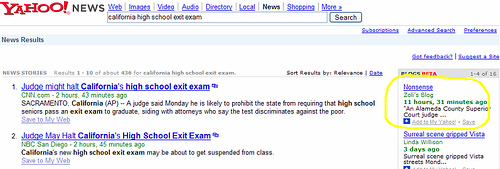(Updated)
I’ve complained so much about Technorati‘s non-performance, it’s getting boring. But I can’t help it, this idiotic message is just plain frustrating:

I guess the message itself is a sad indicator: they know they can’t fix the performance problems, so they innovate where they can: with the error message. Talk about innovation, there is a strange parallel to my previous Vonage post here: I recognized Vonage as the innovator who created the market, now that the job is done and the Big Boys have arrived, it’s time for them to go.
Isn’t the same true for Technorati? They definitely have been (still are) innovators of the Blogosphere, but simply could never scale up the handle the ever-growing traffic. I wish the Yahoo / Microsoft / whoever rumors a few months ago were true: they badly need a White Knight with enough mu$cle to build out the robust infrastructure the ever-growing Blogosphere needs.
Update (6/4): Now my blog is not indexed by Technorati at all. Makes me wonder if I am in the “penalty box” or is it just “Technorati as usual” … ![]()
Update (6/4): I guess I am not in the penalty box, just part of a bigger problem, and, unlike Stefan, I haven’t written 3 emails (just 1), and haven’t been ignored for 17 days.
Tags: technorati, performance, technorati performance, error message, infrastructure, blogosphere, yahoo, microsoft, white knight, zoliblog

 You Know Wikis Have Arrived When …. they become the feature post in your regular junk mail – this time from an Executive Recruiter firm:
You Know Wikis Have Arrived When …. they become the feature post in your regular junk mail – this time from an Executive Recruiter firm:




Blogware’s email comment-notification helped: for some reason it messes up html comments, so this is what I received:
How tricky…